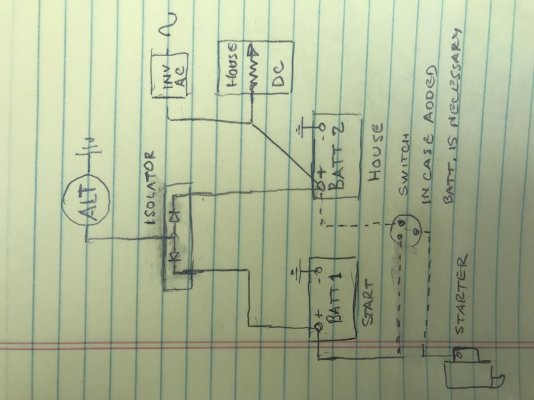In a 25 foot trailerable pilot house cruiser, (and other boats before) I had two chest type 120/12 volt freezer/refrigerator units. They have varied in size from 37 to 104 quart size (37 qt=1.2 cu ft;50 qt=1.6 cu ft; 75 qt=2.5 cu ft, & 104qt=3.5 cu. ft.). I have put these on roller drawer guides and behind cabinet doors, with extra foam board insulation. I have used them in the open of a cabin, or in an enclosed area of a cockpit. The 104 quart unit had separate top loading sections for freezer and refrigerator. Brands have included ARB, Norcold, Engle, Dometic and Whytner. The cheapies were sometimes better than the most costly.
I kept two 100 amp hour Battle Born LiFePO4 batteries, charged drawing 30 amps from the starting battery (group 24) of an outboard motor, thru either a "Sterling" or "Victron" battery to battery charger. (These are available in up to 60 amps[or more]). I monitored with a Victron 702 (can use just the stent as Weebles noted) and used a 2000 watt 80 amp mains charger and 50 amp 120 mains power boost) Victron 2000/80/50 Multiplus inverter charger. This 200 amp hour system easily ran 2 chest refer./freezers, a microwave and an induction burner for cooking. I kept it separate from the house battery system (2 group 31 AGM batteries). Usable power is about 180 amp hours.
As an experiment, I used a Renogy 100 amp hour LiFePO4 battery, a chinese copy of Victron 702 ($35)-(Renorgy available @ $61), a Victron 18 amp hr DC to DC converter, and 600 watt Chinese inverter, with 10 amp 120 V mains charger for the Li battery. I have been using this in my SUV for 3 years, including several transcontinental trips, carrying my frozen diet for several weeks, or keeping frozen / refer. food from the grocery store. So far this "budget" kit works as well as the twice as expensive components I used on the boat. I am using a "Black Forrest" 37 (1.2 cu ft) by Waco, which I got on sale from Defender for $200.
On my long distance cruising boats I used eutectic holding plate, top loading systems: up to 12 cu foot on both freezer and refrigerator (6" closed cell foam insulation). Even in the tropics 1 to 2 hours of engine or generator time twice a day keep the units at appropriate temperature. (Main engine had a compressor, and the generator or mains power drove a separate 3/4 HP water cooled compressor when the main engine was not running).

